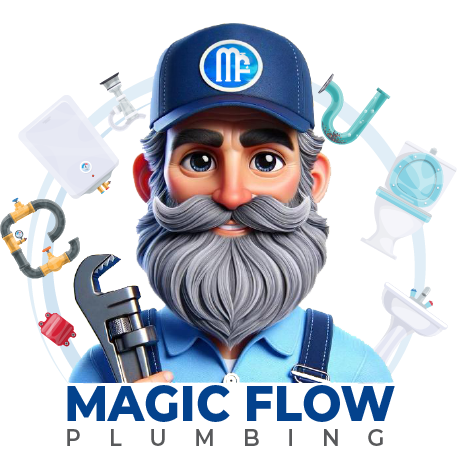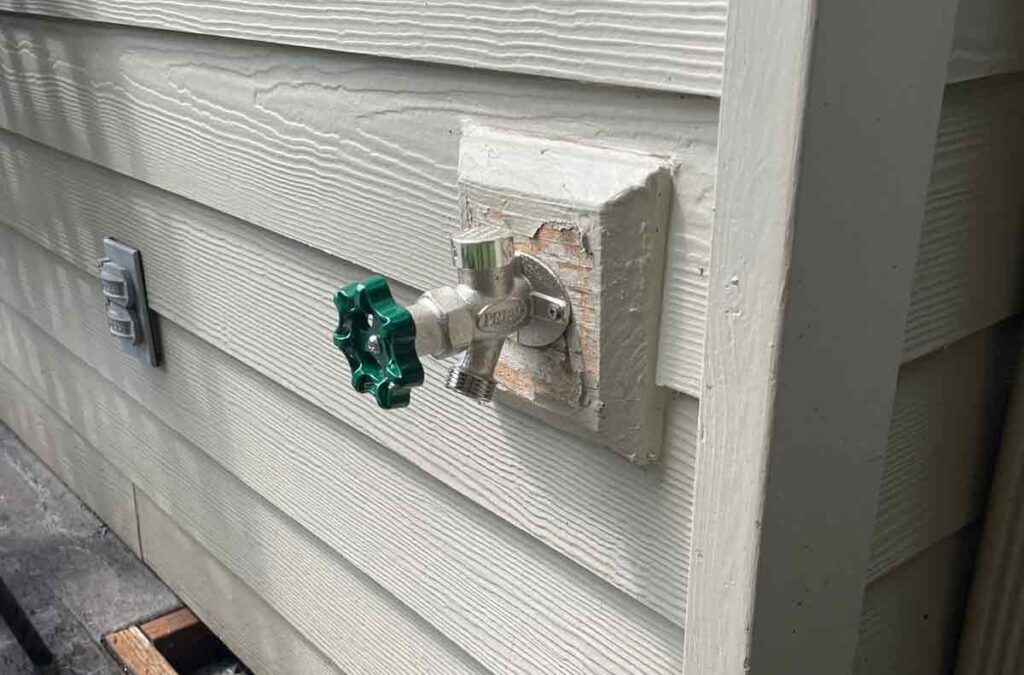Winter in the Pacific Northwest can be mild most years, but even mild cold snaps can cause serious plumbing problems if you’re not prepared. As a homeowner in the Greater Seattle area, it’s smart to get ahead and protect your plumbing system before freezing temperatures strike. At Magic Flow Plumbing, we’re licensed and bonded to serve homes across the region. Here are five essential checks (and fixes) we recommend before winter arrives.
1. Inspect & Insulate Exposed Pipes
Why it matters
Pipes located in unheated or poorly insulated spaces—garages, crawl spaces, attics, exterior walls—are vulnerable to freezing. When water inside the pipe freezes, it expands, putting pressure on the pipe walls. That pressure can cause cracks or even bursts, often resulting in costly water damage when things thaw.
What to check
- Walk through your home and look for pipes that run near outside walls or through unheated spaces.
- Feel along the pipe runs—if a section feels cold to the touch (especially in basements or attics), it probably needs insulation.
- Also inspect joints and fittings (corners, curves, valves)—these are weak spots where freezing often starts.
How to insulate
- Use foam pipe sleeves or wrap insulation tape around the exposed pipe sections.
- For tight corners or joints, get pre-formed pipe insulation pieces so there are no gaps.
- Secure the insulation with zip ties or duct tape if necessary—but don’t squeeze it tightly (you want airflow).
- In very cold zones, consider heat tape or cable (with built-in thermostat) on sections prone to freezing.
In the Greater Seattle area, winters often hover around freezing, and Seattle homes can especially benefit from insulating pipes that run along outer walls or over garages. Some local plumbing companies even offer a “winterization inspection” to check for these vulnerabilities.
2. Winterize Outdoor Faucets & Hose Bibs
Why it matters
Outdoor faucets and hose connections are often among the first to freeze. If left unattended, frozen spigots can burst and send water backward into indoor pipes.
What to check
- Are garden hoses still attached?
- Do you have exterior shutoff valves that feed outdoor faucets or irrigation lines?
- Inspect hose bibs (spigots) for minor leaks, dripping, or corrosion.
Steps to winterize
- Shut off the water to outdoor faucets via the interior shutoff valve.
- Drain the line by opening the exterior spigot and letting water run out.
- Remove any hoses and store them.
- Add foam covers over the spigots to provide extra insulation.
- If your home has sprinkler or irrigation systems, drain and blow them out if necessary (or hire a professional).
By doing this before freezing weather hits, you reduce the risk of burst spigots or water leaking into your foundation.
3. Flush & Maintain Your Water Heater
Why it matters
Your water heater works harder in the colder months because incoming water is colder, so your system has to heat more. Sediment buildup in the tank wastes energy and can cause corrosion. Also, parts like the temperature-pressure relief (TPR) valve can fail if not tested or maintained.
What to check
- Sediment buildup: Old water heaters tend to have sediment at the bottom that reduces efficiency.
- TPR valve: This safety valve should be tested annually to make sure it lifts and reseats properly.
- Anode rod (in tank units): If it’s corroded, it can no longer protect the tank.
- Leaks: Inspect around the tank’s base, connections, and drain valve.
Maintenance steps
- Flush the tank: Turn off the power (or gas), close the cold water inlet, open the drain, and flush until water runs clear.
- Test the TPR valve: Lift the valve handle slightly; you should hear water or steam briefly. If it doesn’t reseat, it needs replacement.
- Replace or inspect the anode rod if your unit is more than 5–7 years old.
- After servicing, fill the tank, purge air from lines, and restore power/gas.
Properly maintaining your water heater ensures it’s reliable when you need it, and can help prevent leaks or failures during cold weather.
4. Check Drains, Vents & Sewer Lines
Why it matters
Fall and winter bring more rainfall, leaves, debris, and shifting soil. Clogs or blockages in your drainage or sewer lines can lead to backups, flooding, or sewer overflows in your home.
What to check
- Watch for slow drains (sinks, tubs). If water drains slowly, roots or debris might be intruding.
- Inspect vents on your roof or plumbing stack for blockages (leaves, moss, nests).
- Look for signs of backups in toilets or floor drains.
- Check clean-out access points for sediment or buildup.
Pro steps
- Use a professional drain cleaning / rooter service to clear lines before heavy rains arrive.
- Ask for a camera inspection to check for tree roots or cracked pipes in your sewer lines.
- Make sure gutters and downspouts are functioning well—overflow water can saturate soil around foundation pipes and weaken them.
Regular maintenance of your drains and sewer lines helps prevent emergencies when plumbing systems are under stress from cold and moisture.
5. Inspect Valves, Joints & Shutoff Locations
Why it matters
During emergencies (burst pipe, leak), you’ll need to shut off water quickly. If valves or shutoff handles are stuck, corroded, or inaccessible, they won’t work when needed. Also, loose fittings and joints are weak points under pressure from freezing or thermal expansion.
What to check
- Locate your main water shutoff valve—make sure it’s easily reachable and functional.
- Turn it on and off (gently) to ensure it’s not stuck.
- Inspect all fixture shutoffs (under sinks, toilets, appliances) to ensure they turn smoothly.
- Look for drips or moisture around joints, especially in basements or near appliances.
- Check for signs of corrosion or rust around valve fittings.
Maintenance steps
- Lubricate valve stems (a little plumber’s grease helps).
- Replace old or corroded valves (ball valves are preferred).
- If a valve doesn’t fully stop water flow, consider replacing it before winter arrives.
- Clearly label shutoff valves and keep paths to them clear so everyone in the home can access them in a rush.
Bonus Tips for Seattle-Area & Local Conditions
Because you’re in the Greater Seattle area, here are some additional checks that make sense in our climate:
- Watch for freeze-thaw cycles: Seattle occasionally dips below freezing at night and thaws during the day. These fluctuations stress pipes and joints more than consistent cold.
- Roof drainage & gutters: Letting water pool around your foundation can saturate soil — that’s dangerous when freezing causes expansion around foundation pipes.
- Hose bib location: Many Seattle homes use exposed hose bibs. For any that remain after winterization, use better insulation or faucet covers.
- Consider hiring a pro: A licensed and bonded plumber (like Magic Flow Plumbing) can do a full winterization inspection and catch problems you might miss.
Why Do These Checks Now?
- Prevent surprise emergencies: Once winter weather arrives, plumbers get busy fast.
- Save on repair costs: Fixing a burst pipe or flood is much more expensive than preventive steps.
- Protect your home & peace of mind: You want reliable hot water, working plumbing, and no leaks when it’s cold.
- Stay aligned with local code & insurance: Inspections and proper valves may help you comply with local standards.
How Magic Flow Plumbing Can Help
If you’re in the Greater Seattle area and you want a full winter prep for your plumbing, Magic Flow Plumbing is your local partner. Because we’re licensed and bonded, we offer reliable service with accountability.
We can:
- Perform a full winterization inspection
- Insulate pipes and install heat tape
- Flush and service your water heater
- Clean sewer lines and perform camera inspections
- Replace valves and fix weak joints
- Provide emergency support when you need it
Before winter hits, reach out to us and we’ll help you get ahead of any plumbing trouble. Better to prepare now than deal with costly repairs later.

